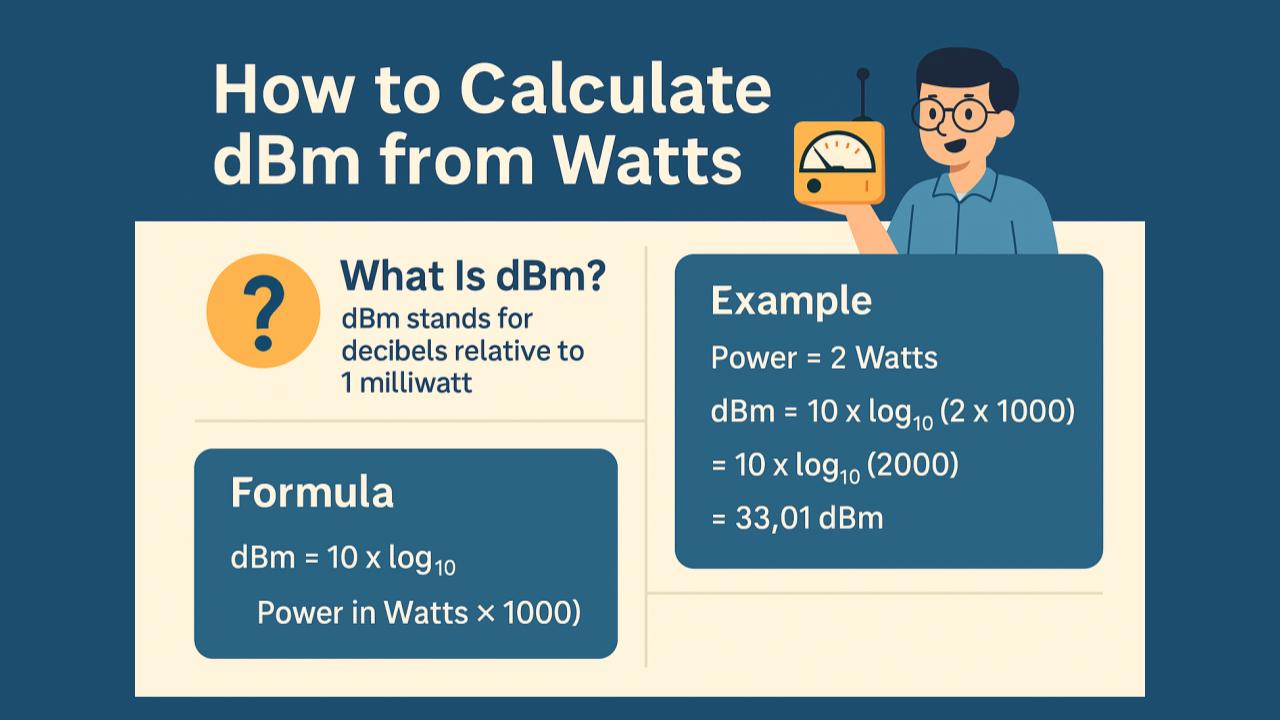📶 If you’ve ever looked at a signal strength meter, radio spec, or Wi-Fi tool and thought, “What the heck is dBm?” — you’re not alone. It’s one of those terms that sounds complicated but is actually pretty simple once you get the hang of it.
Let’s break it down the fun and friendly way. No stress. Just power, math, and a little bit of logarithmic magic.
[toc]
🙋 First Things First: What Is dBm?
dBm stands for decibels relative to 1 milliwatt. It’s a way of measuring power on a logarithmic scale, where:
- 0 dBm = 1 milliwatt (mW)
- Every increase of +10 dBm = 10x more power
- Every decrease of -10 dBm = 10x less power
So, if you have a 1-watt signal, that’s way more than 0 dBm — and we’ll show you exactly how much.
🧮 The Magic Formula
Here’s the formula to convert Watts to dBm:
dBm = 10 × log10(Power in Watts × 1000)
Why multiply by 1000? Because there are 1000 milliwatts in 1 watt, and dBm is measured relative to 1 milliwatt.
☕ Real-Life Example
Let’s say your transmitter outputs 2 Watts. Here’s how you calculate dBm:
Step 1: Multiply by 1000
2 W × 1000 = 2000 mW
Step 2: Take the log base 10
log10(2000) ≈ 3.301
Step 3: Multiply by 10
10 × 3.301 = **33.01 dBm**
✅ So, 2 Watts = ~33 dBm
🛠️Calculator
Enter the value in Watt and the tool will calculate the dBm equivalent.
🔄 Quick Reference Table
| Power (W) | Power (mW) | dBm |
|---|---|---|
| 0.001 | 1 mW | 0 dBm |
| 0.01 | 10 mW | 10 dBm |
| 0.1 | 100 mW | 20 dBm |
| 1 | 1000 mW | 30 dBm |
| 2 | 2000 mW | 33 dBm |
| 10 | 10,000 mW | 40 dBm |
| 100 | 100,000 mW | 50 dBm |
🧩 Why Use dBm Instead of Watts?
Great question! Engineers and tech tools use dBm because:
- It’s easier to compare signals that vary widely (from tiny to massive).
- It works well with logarithmic scales (used in antennas, amplifiers, etc.)
- It fits perfectly with decibel (dB) gain and loss calculations
Plus, it sounds super smart. 😎
🔁 Need to Go Backwards?
Want to convert dBm back to Watts? Here’s the reverse formula:
Watts = 10 ^ ((dBm - 30) / 10)
For example:
30 dBm = 1 Watt
40 dBm = 10 Watts
20 dBm = 0.1 Watt
🧠 Final Thoughts
Once you get the hang of it, dBm is your best friend for understanding power levels in electronics, wireless networks, radio, and more.
Just remember the golden formula:
dBm = 10 × log10(Watts × 1000)
Whether you’re building a wireless gadget or just geeking out with your Wi-Fi analyzer, now you can do the math like a pro (and impress your nerdy friends).
